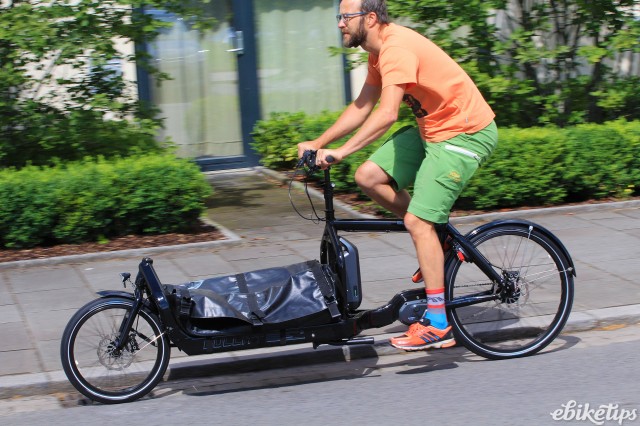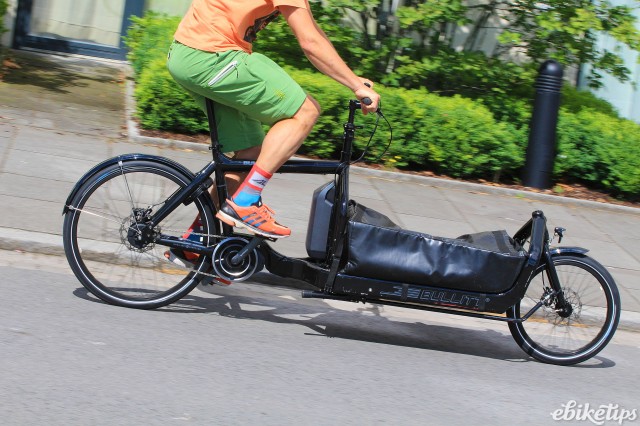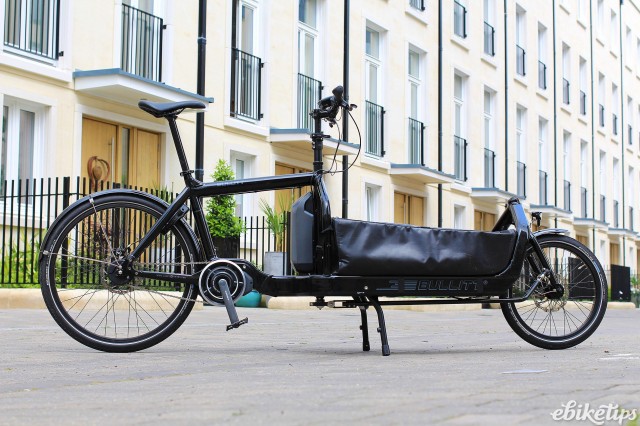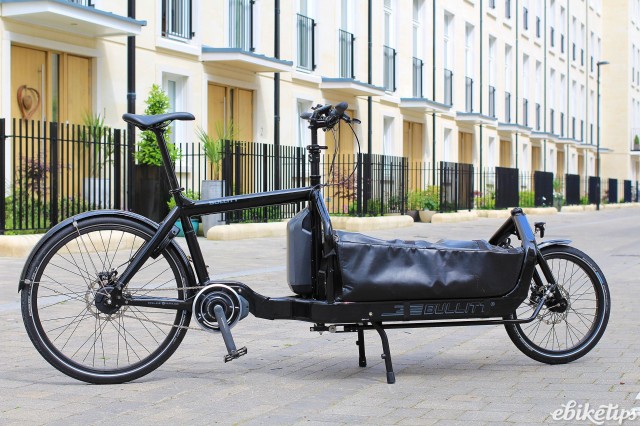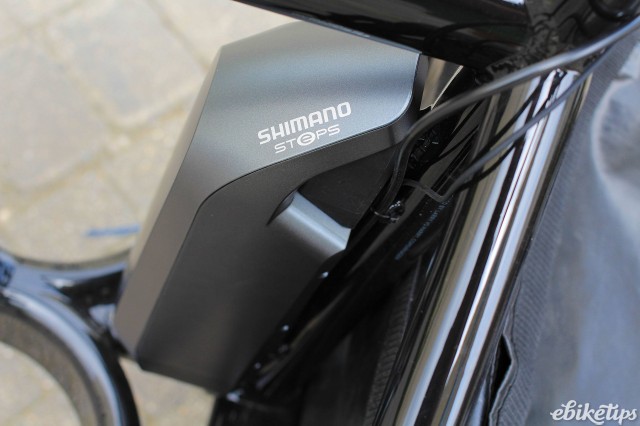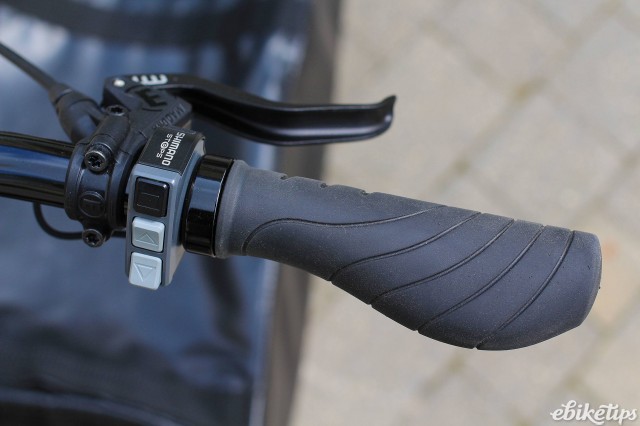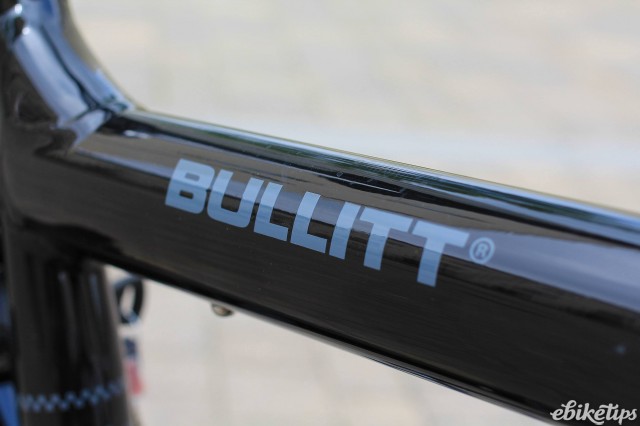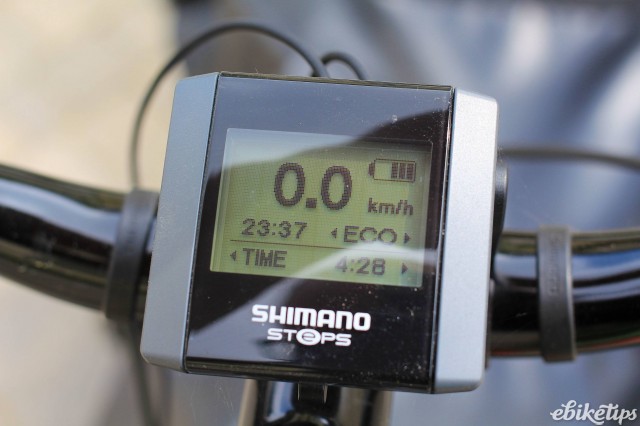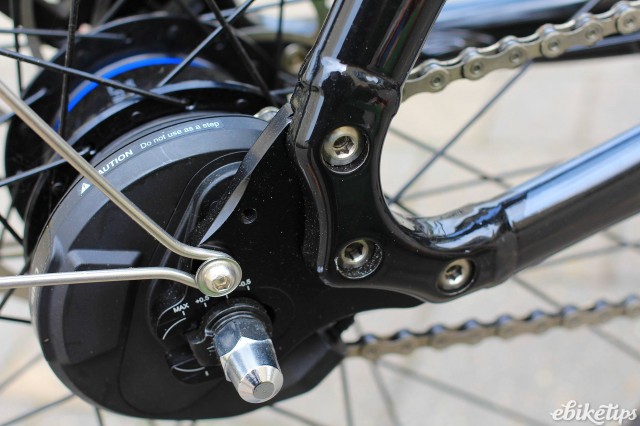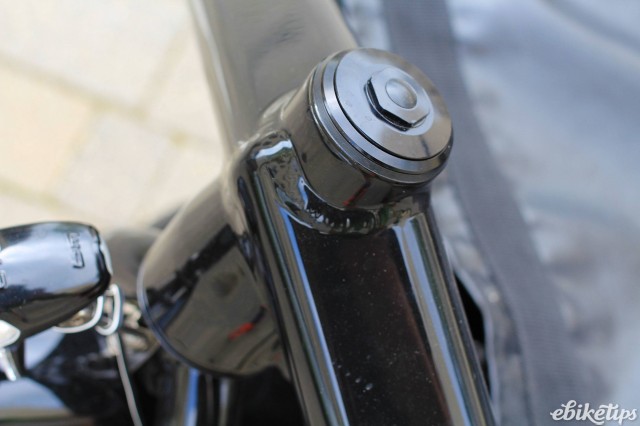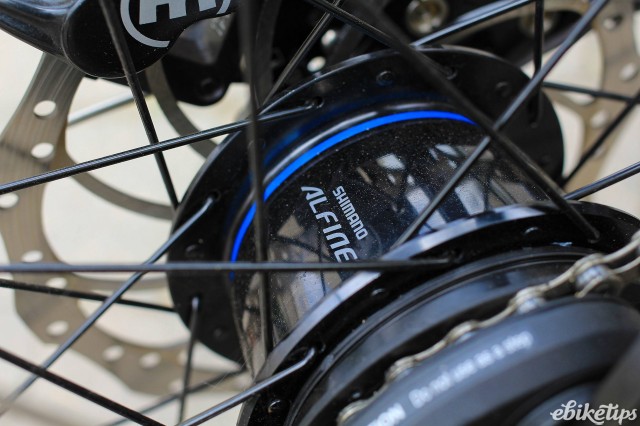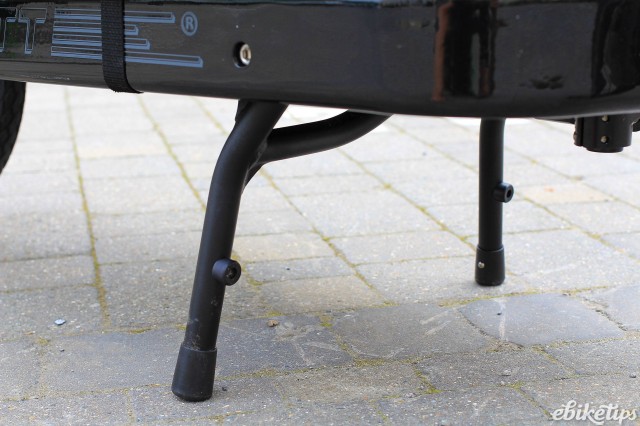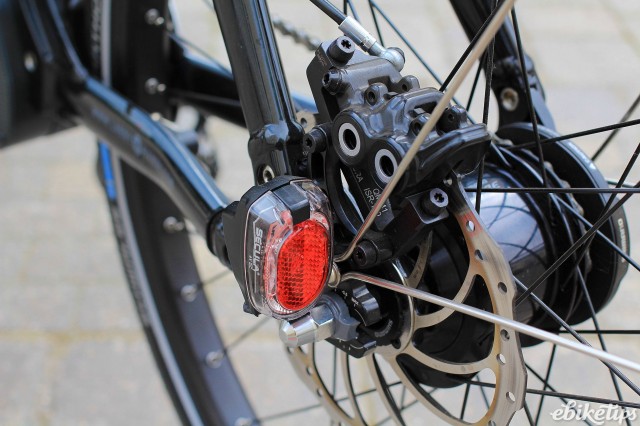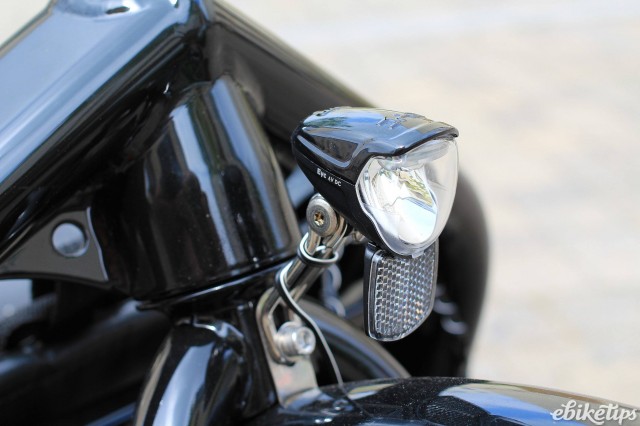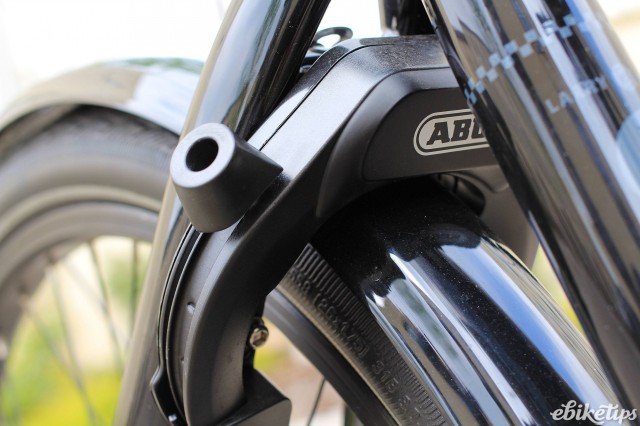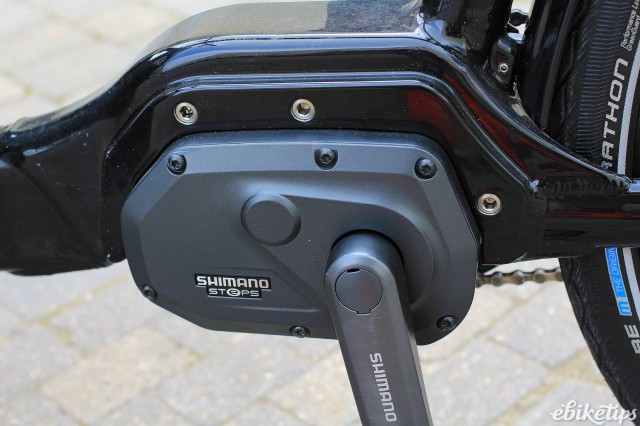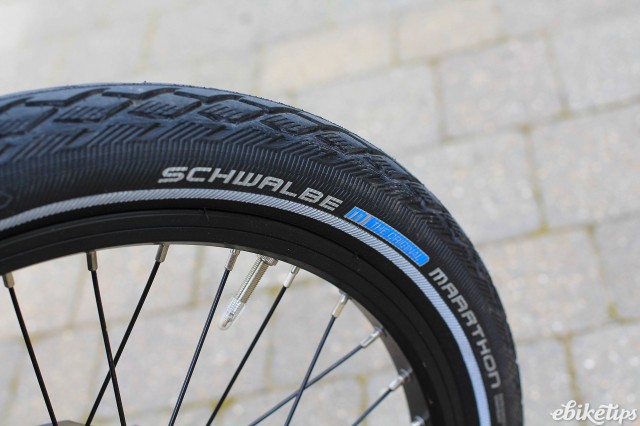Larry vs Harry eBullitt STePS
Overview
- Beautifully engineered
- Easy and engaging to ride
- STePS pedal assist a perfect match
- Expensive, especially with some cargo options
- You'll need plenty of space to store it
If you’ve been following the cycling culture of Copenhagen, perhaps through the lens of Mikael Colville-Andersen (creator of Copenhagenize.com), you’ll probably have encountered the Larry vs Harry Bullitt.
Based on the classic Danish Long John design, Larry and Harry set out to create a modern, sexy, two-wheeled cargo bike that would stand up to year-round use, either commercially or by families, yet still be the fastest way around the city.
Now that’s all very well in flat, well-infrastructured Copenhagen. What about hilly, start-stop-cycle-lane Britain? That’s where the pedal-assisted, Shimano-STePS-equipped eBullitt comes in, adding the grunt of a Shimano mid-motor to the package.
The Bullitt uses an alloy mainframe with a variety of cargo options from what’s effectively a big plastic bucket right up to a lockable aluminium flight case. Those options will add various amounts to the base cost of the bike, which for this pedal-assist version is about £4,000. We’ve covered all the options available in this just in story. There’s a choice of ten different colours too.
The 20” front wheel is driven by a linkage system that runs underneath the cargo deck. The bike is long and you might expect it to be a relaxed ride, but actually the rider position is quite aggressive for a cargo bike, more like a fast hybrid than a city cruiser.
Shimano’s STePS drive system is one of the current market leaders and it’s a good choice for a cargo bike such as this. The mid motor puts the weight in the middle for better handling and also applies the power much better than a front hub motor would. It also allows the use of a hub gear at the rear, and the Bullitt uses an eight-speed Shimano Alfine hub with electronic Di2 shifting. That means you get two remote switches: the left-hand one toggles through the power modes, while the right-hand one is for your gears.
STePS has a couple of neat extra Di2 features. Firstly the motor backs off the power when you’re shifting which helps with clean shifts and also reduces stress on the hub. Secondly you can select a gear for starting off, and the hub will shift to that gear when you come to a standstill so you’re always in the right gear to get going again. The 400Wh battery will give you a range of anything from 20km to 100km, depending on how you’re riding and which of the three assist modes (Eco, Normal, High) you’re using.
Tim says: This is a bike that easily goes up hills as well as down. Your speed uphill will depend on your own legs as well as how much load you’re carrying, but it’s no slouch. Compared to my usual ride – an e-assisted Bakfiets trike – the Bullitt is lithe, cornering at speed like a regular two-wheeler. The price of this is the need for a kickstand to prevent the bike from toppling when parked.
With the front wheel so far from the handlebars, handling feels decidedly odd at first compared with riding a trike or a regular bike, and my muscle memory took a while to adjust. It’s so easy to ride, however, that it’s worth persevering with. I found myself dispensing with the electric assistance while riding on the flat or on short inclines since it rides so freely. The lack of a hub dynamo – the built-in lighting system is battery-powered – means the 20” front and 26” rear wheels are unimpeded and roll very well indeed.
I performed one supermarket shop and a recycling centre drop during the week; this is a bike that could replace some, but not all, urban car or even van journeys.
Tim Beadle is a 40-something web developer, husband and father of three kids. He’s been cycling for transport regularly since 2007 and lugging the kids around in an e-assist Bakfiets trike since 2013
Dave says: Straight from the off the Bullitt is a joy to ride. The process of getting it rolling takes a bit of learning but I was soon hopping on and off it with ease; bear in mind though that because of the standard diamond frame at the rear it’s not a bike you can easily step into.
Once you’re up and cruising the Bullitt is never anything but assured and stable, with great, direct-feeling steering. You might expect it to feel a bit vague and detached but nothing could be farther from the truth, this bike corners spectacularly well and it’s nimble enough to squeeze through traffic too. Once you get used to the length it’s no wider than a normal bike, and filtering is simple.
I’ve used the STePS system on a number of bikes, but for whatever reason it seems to be in its element here. Bath is hilly and the Bullitt isn’t light but I rarely needed anything more than Eco mode with the bike unloaded, even when climbing. Moving stuff around – shopping, kids, at one point a gazebo – meant heading up to Normal and sometimes High, but I never found a load that the Bullitt could carry that the motor wouldn’t cope with.
Range-wise I was averaging about 35km for a charge, which isn’t at all bad around here and not substantially different from a standard STePS-equipped city bike. There’s some extra bulk to drag up the hills but rolling resistance is absolutely minimal; there’s no need at all for the motor if you’re cruising on the flat.
The (non-standard) canvas bag we had as cargo space was plenty big enough for a week’s worth of shopping and it’s small compared with the plastic box or alloy boxes you can get as part of your bike package. It wasn’t really designed for kids to ride in but that didn’t stop every single child who encountered it wanting to have a go, which meant a long day of doing laps of a garden party at one point. If you wanted primarily to ferry kids about you’d be better off with the dedicated seat or, alternatively, fitting some straps into the plastic box for as a cheaper option. There’s masses of versatility depending on your needs, although some of the stock options come at a significant cost; if you want a proper seat and a rain canopy (you need the baseboard as well) then that’s an extra £700. The plastic crate, in comparison, is just £25.
Whichever cargo option you choose the whole bike isn’t going to be cheap. But you have to look at it from the point of view of replacing a second car. If owning this means you only need one car instead of two (or even none instead of one) then that’s probably going to save you at least £2000 a year on taxes, fuel, insurance, upkeep and depreciation. So two years down the line – or conceivably a lot less, if you’re into more expensive cars – you’ll be breaking even and from then you’re quids in.
It’s an investment, sure. But it’s an excellent bike, this. It’s fun to ride, can carry loads of stuff and costs next to nothing to run. You’ll need somewhere to keep it and you might miss the roof and the fan heater on those winter runs to the shops, but the Bullitt is a genuine alternative to a car for many trips, especially in the city. And it's brilliant fun to ride.
2 comments

I stuck two kids in it and rode up the climb to my house (1.5km at 5% average, 12% max) without any issues, and without having to work too hard. so yes, it's well capable of moving a load around
Hi Dave,
Thinking of getting the ebullit but without a thorough demo all i can do is read the reviews on the steps di system. What's your view on whether the motor can pull a load up an incline? I've tried a haibike Yamaha s pedelec system rated at 80nm and 45kmh - but i guess this is an unfair comparison.
I have a standard bluebird bullit with XT groupset which is brilliant but as soon as i saw the ebullit i was hooked...
Any thoughts welcome
Thanks
